Introduction
While other firms continue to update existing full-frame lenses for use with their APS-C format cameras, Pentax has concentrated on dedicated lenses for their crop-cameras. The result is one of the widest range of lenses of this type available. The line up consists of several series but the DA Limited models are highly regarded for their mechanical construction, high-grade optics and small size.
The new HD DA 20-40mm f2.8-4 ED is the first zoom in the range from the new owner of the Pentax brand – Ricoh. It’s the equivalent to a 31 to 62mm and the variable f2.8-4 maximum aperture allows both shooting in available light while maintaining a relatively small form-factor. It measures just 2.72 x 2.8 in (69 x 71mm) and weighs a featherweight 9.98 oz (283g).
This new model features a weather-sealed and machined aluminum outer and has 9 elements in 8 groups using both ED and super-ED glass in its construction. Minimum focus is just 11.02 in (28cm) while Super Protect (SP) and HD lens coatings repel dust, water and greasy fingerprints and reduce flare and ghosting respectively. The new lens is available in chrome or black finish for just less than a $1,000.
Putting the lens and camera through our usual tests, the combination returned a good DxOMark score of 17 points. That could have been much better if it wasn’t for the relatively low uniformity and peak sharpness. It is generally well corrected throughout the zoom range.
As you might expect there’s noticeable barrel distortion at 20mm, and while less obvious at 40mm it’s still there. Some light vignetting is noticeable at either end of zoom range but it’s more or less gone by f5.6. And, Pentax has done well to keep lateral chromatic aberration in check, though it’s there in the corners and outer margin at 20mm. Transmission is excellent, measuring 3-4.2 TStops it’s about ¼ stop lower than the marked aperture value.
One of the downsides of producing a high-quality zoom is that it’s likely to tempt people away from the primes. Compared with the highly regarded 21mm f3.2 AL, the zoom has stronger distortion and similar vignetting but, surprisingly, it has better transmission and lower chromatic aberration.
It isn’t as sharp though, particularly across the field, until f5.6. Then the zoom actually has the more uniform sharpness and continues to have throughout the aperture range to f22, even if softening from diffraction is apparent from f11 onwards.
At the other end of the range, the zoom compares favorably with the 40mm model. It’s sharper centrally at the initial aperture and it has close to edge-to-edge sharpness at f5.6, whereas the borders of 40mm never really get close to the centers. Of course at 40mm the zoom is a stop slower and it has slightly more visible chromatic aberration and barrel distortion.
Pentax HD DA 20-40mm f2.8-4 ED Limited mounted on Pentax K-3 vs. Nikon AF-S Nikkor 18-35mm f3.5-4.5G ED mounted on Nikon D7100 vs Canon EF 17-40mm f4L mounted on Canon EOS 7D: Good balance of performance
Examined against a similarly modern rival zoom (albeit full-frame) and a body with a near identical sensor (also without AA filter) in the form of the Nikon AF-S Nikkor 18-35mm f3.5-4.5G ED and Nikon D7100 respectively, we can see the Pentax is slightly lagging behind, particularly with regard to peak sharpness.
The Nikon lens, however, appears to be optimized for sharpness from the initial aperture onwards. The Pentax struggles to keep up at least till f8 at 30-35mm where it has better uniformity. In most other respects the two are similar in performance with the Pentax having the slight edge overall.
They have similar distortion and vignetting but the Nikon has heavy chromatic aberration at 18mm though that’s not unexpected at that focal length. The Pentax is the faster of the two but it’s also more expensive.
Compared to the Canon combination, the Pentax is slightly sharper at every focal length and aperture setting but the Canon has better control of distortion over the relevant range and marginally lower vignetting. Still, you wouldn’t notice the difference in real world use. Chromatic aberration is similar as well.
Although the Pentax HD DA 20-40mm f2.8-4 ED Limited looks to be a desirable option in practical terms, it may not appeal to Pentax DA Limited die-hards who relish the small compact designs of the pancake primes. Nevertheless Pentax has been at pains to develop this zoom with the same guiding principles by offering the same excellent build and similar depictive power. It has a good optical performance overall and while not immediately obvious, the price is competitive against rival offerings.


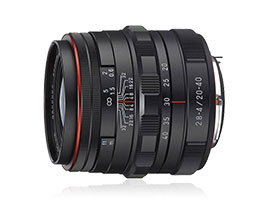


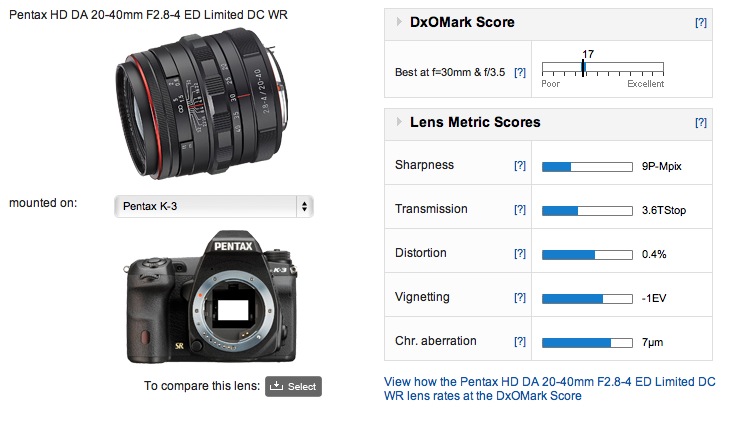


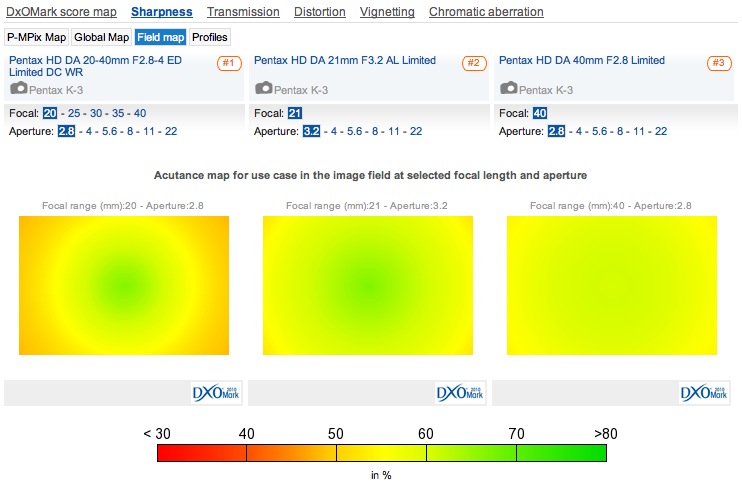
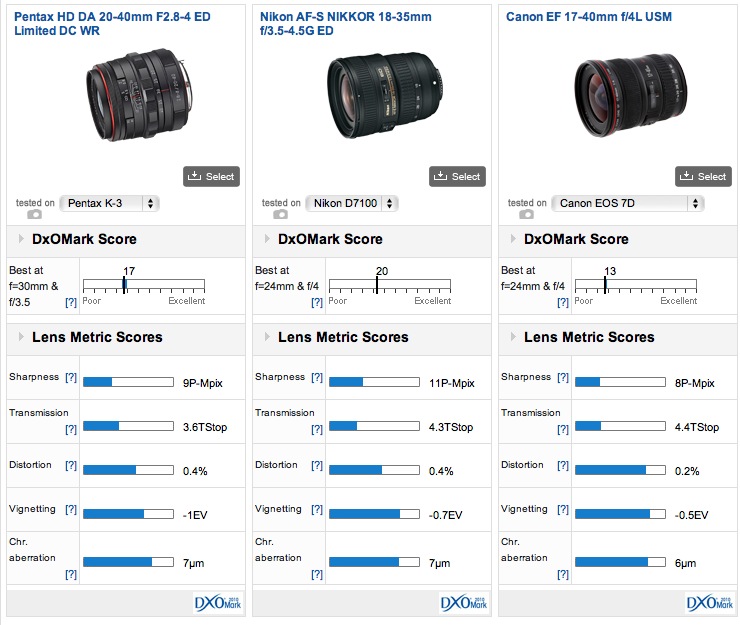
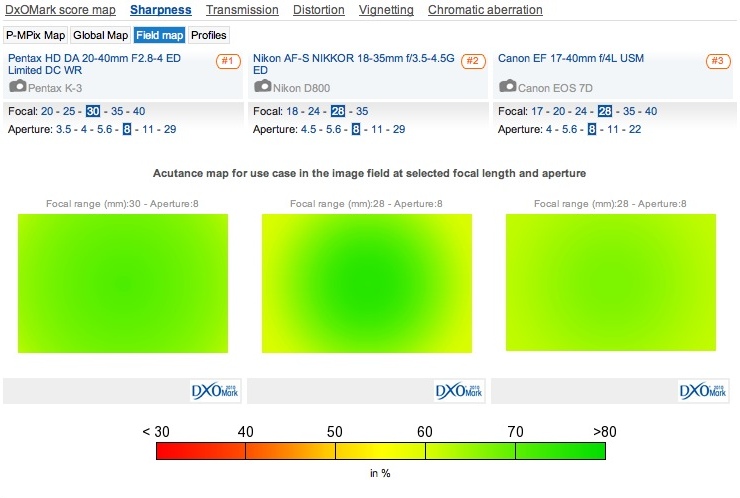
DXOMARK encourages its readers to share comments on the articles. To read or post comments, Disqus cookies are required. Change your Cookies Preferences and read more about our Comment Policy.